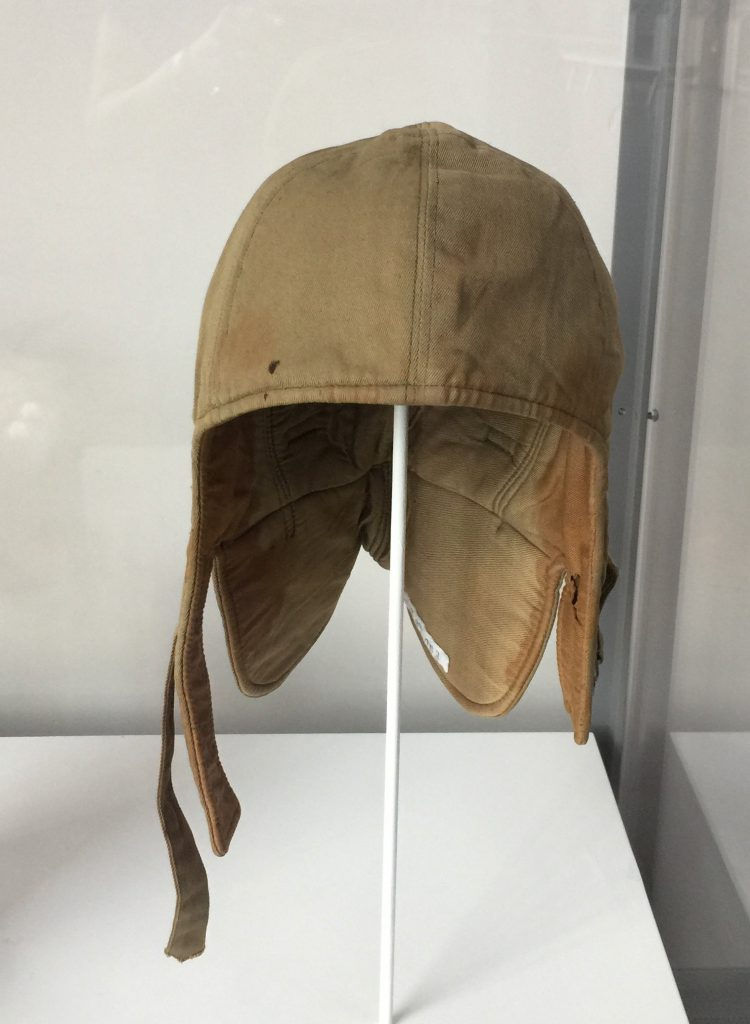World War 2 Museum Textiles – Part 2
- Londa
- Aug 9, 2017
- 3 min read
We returned to the WW2 Museum to complete our visit – so enjoy the final installment of the textiles and clothing found there.
Below: italics indicate my thoughts, and regular font indicate what was on the accompanying signage.
1942 COMBAT HELMET
Made of 2 layers of cotton twill (the prevalent weave of most everything in the clothing), with thin padding between, this winter combat helmet was designed to retain warmth – but offered no ballistic protection. An extended neck flap, intended to keep rain from the tanker’s neck, merely deflected showers down the back of the tanker’s clothing, often into his trousers.
Does it strike you as well, that as seamstresses, in today’s world, we often forget the original purpose of clothing: protection?

‘AN’ JACKET
‘AN’ stands for Army-Navy. This jacket was a mid=war attempt of standardizing flying clothing between service branches. However, the two service branches could not agree on the same type of jacket and true standardization between services never occurred. The US Army Air Forces favored a shift to cloth-shelled flying jackets, while the US Navy retained leather-shelled flying jackets.
Hmmmm in a time of war it seems that perhaps an agreement on this should have been possible, in my opinion. My mind is befuddled by the challenge of outfitting all the men in appropriate protective clothing in the first place. I’d love to find some facts about where/how/designers/time all of this effort actually took.

AMAZING DETAIL
I was constantly amazed at the workmanship and detail in the uniforms! Check out the red piping around the base of the collar, down the fronts, hems, and even then on the epaulets and the sleeve flange detail. We realize the effort that piping takes. Amazing, just AMAZING!

POCKETS and MORE POCKETS
One could do a study on just pockets alone at the museum among the clothing!!! Check out the size of these cargo pockets… I wonder if they were used to carry a lot of ‘stuff’, or if it just a design but not functionally-inspired…
The sign shared: During WW1, the US Navy authorized the green winter working uniform for aviation personnel. Commonly referred to as ; Aviation Green” the uniform is worn with brown low quarter shoes as opposed to the standard black shoes of the surface navy. For this reason, the aviation branch of the navy was referred to as the “Brown Shoe Navy“.

Here is another style of pocket – but this time, inside, under the flap stuck into what I know as a ‘Besom’ Pocket as on nice men’s suits. I perfected how to do this style of pocket years ago while teaching tailoring, so I fully KNOW and appreciate all of the effort it took to stitch this type of pocket. Like the ones above, one could faintly see that these pockets were similarly deep.
PATCHES MADE PERFECT
The patch on this jacket caught my eye as it obviously was had sewn onto the uniform. I didn’t often notice hand-sewn on patches, but I wish I’d looked closer on my way through the Museum to check that out. While in this display, I went back to the other uniforms and saw that generally, they were all machine-sewn on. That means that the patches were part of the original design and were sewn on before the sleeve seam was sewn. Just think even of the precise and pre-determined placement for all these patches! This close-up shot also shows the twill weave of the wool fabric (I saw plenty of moth holes proving to me what I already knew – that most were wool).

Note the spaced zigzag on the brown of a contrasting thread, and the raw edges on the patch fabrics – which were really layers of felt, not embroidered ‘patches’ as we know them today.

GIFT SHOP FASHIONS
This white jacquard dress caught my eye in the Museum Gift Shop that was full of WW2 civilian fashions. I love the rolled bias cut collar.
But the back ‘finish’ of the collar? Why was it not designed to end at the zipper? Was this just ‘the look’?

Here is a book collection of the era that looked VERY interesting…

And…we found a store based totally around the era of WW2 Fashion called Trashy Diva. www.trashydiva.com
Personally, I don’t think the (admirable) morality and propriety of the day would have thought much of the name, ‘Trashy Diva’, but it was a nice collection of the styles. You might want to check it out.
Concluding Thoughts
I‘m too tired at the end of each day here on vacation to be reading my book series about WW2 by Brock and Brodie Thoene (read more about them and the series at this link), but again want to encourage you to delve into them yourself for an up close and personal understanding of the spirit of the days that make up the 1930’s and 1940’s. I can assure you that you will close the book each time you read with a prayer of both thanks for living in these days and for humanity as we face the future.











Comments